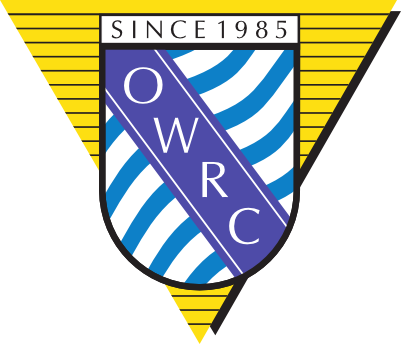Fueling while rowing, both in training and races, can be an eating and drinking contest with some scenery thrown in. The goal is to maximize your calorie intake, thereby enhancing your performance, without pushing your system over the edge and exceeding your stomach’s capacity to absorb nutrients. This can be tricky and needs to be practiced. At one point or another, a rower’s weak link is usually his or her stomach. If you can capitalize on your nutritional fueling, you’ll be well on your way to a PR race with a strong finish or just a great row on the Bay!
DRINKING AND FUELING
The classic mistakes when it comes to hydration and fueling are 1) Not drinking adequately and being dehydrated 2) not taking in enough calories - before or during – your row for the distance you are going and 3) not paying attention to the need for salt or sodium (electrolytes).
Even a 2% loss of water through sweat during exercise will result in a decrease in performance and an increase in effort. By the time you experience a 6% loss, dehydration has set in and it becomes very difficult, if not impossible, to recover without rest from this state. It is important that your intake of fluids match your sweat losses. Measure your sweat rate by weighing yourself before and after a hard row. Rowers average one liter per hour unless you are a heavy sweater, it is very hot or the intensity is all out. For each two pounds lost, you needed one liter to keep hydrated.
To delay fatigue and keep performing at your best during a row or regatta you need to replace carbohydrates BEFORE your glycogen stores get depleted. The average maximum amount of carbohydrate you can absorb and burn during exercise is about 200 to 300 calories per hour or about 1 gram (4 calories) per minute of exercise. Eating too much and you will be in double trouble because extra carbohydrates will cause bloating in your gut due to your inability to absorb fuel at a higher rate. Taking in less than your ideal amount of carbohydrates means you cannot “catch-up” on energy when you begin to feel fatigued and hypoglycemia (low blood-sugar) takes its toll. Start the race fully fueled.
Electrolytes, especially sodium or salt, become more crucial in longer rows because the effects of sweat loss and the ensuing dehydration become cumulative. As the heat, duration and the intensity of an outing increase, sodium loss becomes critically high. Sweating leaves the blood thicker, making the heart work harder to pump it sending your pulse rate sky high. The need for salt can vary according to the weather and the athlete’s sweat level so be sure and take in electrolytes in sports drinks or eat some salty snacks such as pretzels or chips if you plan to be on the water for an extended period of time.
Pre-Training - Race Nutrition
Pre-Exercise Snack/Meal - allow enough time for digestion. Familiar foods are best before competition. (low fat, low fiber, moderate protein, HIGH carbohydrate and lactose-free if lactose intolerant)
Large Meals - 4-6 hours
Small Meal - 2-3 hours
Liquid Meal, Snack - 1-2 hours
Immediately Prior to Exercise - sport drink, gel & water
Hydration
Drink 2 cups water one to two hours before training
Drink water just before rowing on a warm day
Food Suggestions
Bananas, toast with nut butter and fruit spread, bagels, pancakes, fruit juice, smoothies, yogurt, pasta with tomato sauce, rice, potatoes, flour tortilla, low-fiber cereal, fig bars
Low-fat, low fiber, high carbohydrate energy bar, sport drinks or gels
During Training - Race Nutrition
Amount and Timing
30-60 grams of carbohydrate every hour can help delay fatigue and allow rowers to train harder and longer
1 gram of carbohydrate = 4 calories, therefore take in 120-240 calories per hour, ESPECIALLY after the first hour. If the athlete was “topped up” before the start, he/she may not need much fuel in the first hour.
Space out calories – try ingesting every 20 to 30 minutes.
Hydration
Sweat rates can vary from ½ liter to over 2 liters per hour. Learn your sweat rate and hydrate accordingly. Sport drinks help with retention of water and also add electrolytes.
Sweat Rate – To determine your sweat rate, weigh yourself in the nude before a workout. Exercise for one hour without food or water. Weigh yourself in the nude again at the end of practice. For each two pounds lost, your sweat rate would be one liter per hour.
Food Suggestions
Bananas, graham crackers, a few orange slices
Sport drinks & gels with water are ideal.
Post-Training - Race Nutrition
“30 Minute Window” and Recovery
GOAL – to replace lost fluids and lost energy (calories)
Eat about 200 calories within the first 30 minutes following exercise – high carbohydrates. The ability of muscle to absorb carbs is greatest in this time frame following intense exercise.
Small Meal or Meal – within the next 2 hours
Some protein is necessary to repair and rebuild damaged muscles. A ratio of 1 : 3 or 4 (one part protein to three or four parts carbohydrate) is ideal
Hydration
Drink for your lost sweat – sports drinks help with sodium loss
2 cups water for every pound lost during the workout
Food Suggestions
Chocolate milk (regular or soy), bagel with nut butter and fruit spread plus raisins, yogurt with nuts and a piece of fruit, a turkey sandwich plus fruit, crackers with low-fat cheese and fruit juice, granola-type cereal with nuts and berries, bean and rice burrito
Sports recovery drink, sports bar and water

